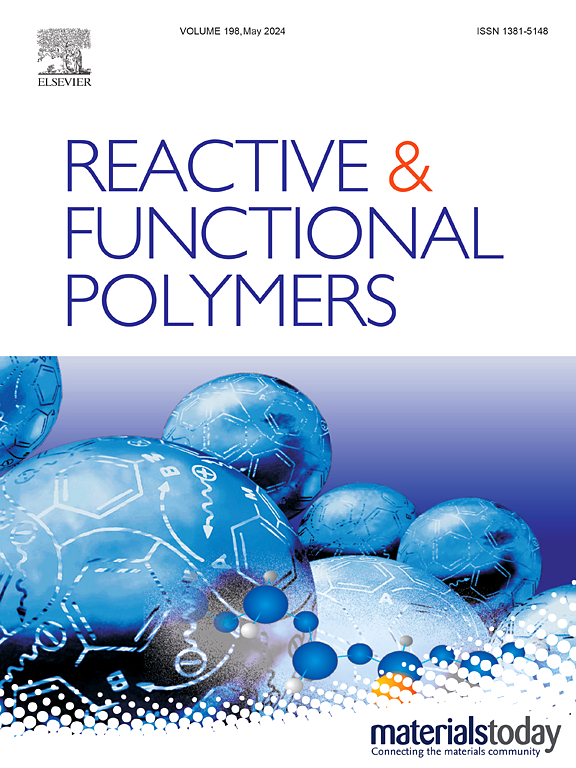Tough, stretchable, waterproof and biodegradable lignocellulosic films derived from fully physical interactions
IF 5.1
3区 工程技术
Q1 CHEMISTRY, APPLIED
引用次数: 0
Abstract
Cellulose films (CF) stand out among petroleum-based plastics due to their resource abundance, renewability, biodegradability and nontoxicity, but are hindered by the water sensitivity and poor mechanical performances. Herein, inspired by the cellulose/lignin network structure in natural bamboo, tough, stretchable and waterproof lignocellulosic film (LCF) was developed by embedding lignin into CF via physical impregnation. Lignin serving as natural binder was filled into the gaps between lamellar fibers of the swollen cellulose film and adhered onto cellulose fiber surfaces via intermolecular hydrogen bonding. The synergistic effect of densified structure and strong interfacial adhesion promoted the mechanical properties and water stability of the resulting LCF. The tensile strength of LCF reached to 73.37 MPa and was improved by 79.8 % when compared with CF. Even immersing in water for 30 d, LCF still presented remarkable mechanical performances with mechanical strength of 60.88 MPa, strain of 10.04 %. Synergistically, the incorporation of lignin also enhanced the thermal stability, antioxidant, UV shielding properties of LCF. Although the biodegradability of LCF was reduced by comparing with CF, it was still regenerable for sustainable usage. Therefore, this work provides not only a convenient method to fabricate lignocellulosic film, but also a high-performance full-biomass film that promises to replace nonbiodegradable petrochemical plastic.

坚韧,可拉伸,防水和可生物降解的木质纤维素薄膜,源于完全的物理相互作用
纤维素薄膜(CF)因其资源丰富、可再生、可生物降解和无毒性而在石油基塑料中脱颖而出,但受水敏感性和较差的力学性能的制约。在此,受天然竹子中纤维素/木质素网络结构的启发,通过物理浸渍将木质素嵌入到纤维中,开发了坚韧,可拉伸且防水的木质纤维素膜(LCF)。木质素作为天然粘合剂填充到膨胀的纤维素膜层状纤维之间的空隙中,并通过分子间氢键粘附在纤维素纤维表面。致密的结构和强大的界面附着力的协同作用促进了LCF的力学性能和水稳定性。LCF的抗拉强度达到73.37 MPa,比CF提高了79.8%,即使在水中浸泡30 d, LCF的机械强度仍为60.88 MPa,应变率为10.04%。同时,木质素的掺入也增强了LCF的热稳定性、抗氧化性和紫外线屏蔽性能。虽然LCF的可生物降解性比CF降低,但它仍然是可再生的,可持续利用。因此,这项工作不仅提供了一种方便的方法来制造木质纤维素薄膜,而且还提供了一种高性能的全生物质薄膜,有望取代不可生物降解的石化塑料。
本文章由计算机程序翻译,如有差异,请以英文原文为准。
求助全文
约1分钟内获得全文
求助全文
来源期刊

Reactive & Functional Polymers
工程技术-高分子科学
CiteScore
8.90
自引率
5.90%
发文量
259
审稿时长
27 days
期刊介绍:
Reactive & Functional Polymers provides a forum to disseminate original ideas, concepts and developments in the science and technology of polymers with functional groups, which impart specific chemical reactivity or physical, chemical, structural, biological, and pharmacological functionality. The scope covers organic polymers, acting for instance as reagents, catalysts, templates, ion-exchangers, selective sorbents, chelating or antimicrobial agents, drug carriers, sensors, membranes, and hydrogels. This also includes reactive cross-linkable prepolymers and high-performance thermosetting polymers, natural or degradable polymers, conducting polymers, and porous polymers.
Original research articles must contain thorough molecular and material characterization data on synthesis of the above polymers in combination with their applications. Applications include but are not limited to catalysis, water or effluent treatment, separations and recovery, electronics and information storage, energy conversion, encapsulation, or adhesion.
 求助内容:
求助内容: 应助结果提醒方式:
应助结果提醒方式:


